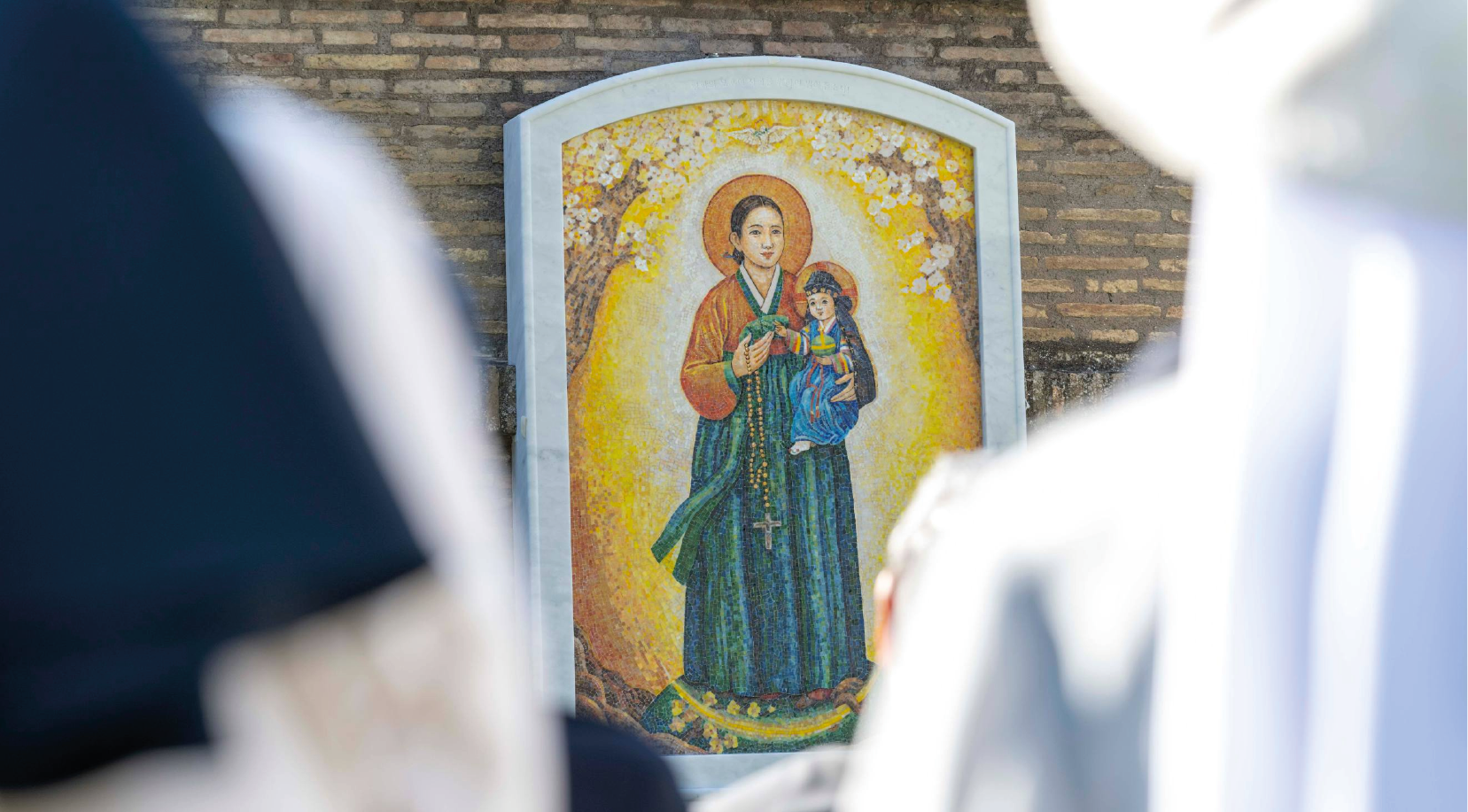(ZENIT News / Vatican City, 09.23.2024).- In a powerful gesture of unity and hope, the Korean Catholic community has introduced a new mosaic of the Virgin Mary, symbolizing their enduring plea for peace across the globe. The mosaic, titled “Our Lady of Korean Peace”, was blessed in the Vatican Gardens on September 20, a date that holds profound significance as the Church commemorates the martyrdom of Saint Andrew Kim Tae-gon, Korea’s first priest, and his companions. The installation serves as both a tribute to these martyrs and a call for reconciliation in today’s turbulent world.

The blessing ceremony was attended by high-ranking members of the Vatican, including Cardinal Fernando Vérgez Alzaga, President of the Vatican City State’s Governorate, and Cardinal Lazzaro You Heung-sik, Prefect of the Dicastery for the Clergy. A number of Korean bishops, priests, religious leaders, and laity were also present, marking a moment of profound unity as the country’s bishops were in Rome for their “ad limina” visit—a tradition where bishops report on the status of their dioceses to the Pope. Diplomats from the Korean Embassy to the Holy See joined in the prayers, emphasizing the global nature of this call for peace.
The mosaic’s imagery is rich with symbolism. The Virgin Mary, dressed in a traditional Korean “hanbok”, stands as a figure of maternal care and divine protection. Her red top represents divine motherhood, while her turquoise skirt reflects peace. She cradles the Child Jesus, who is dressed in colorful attire, symbolizing the youth of Korea, and holds a globe in his hand, signifying his dominion over the world. The Virgin also clutches a rosary and stands triumphant over a serpent, symbolizing her victory over evil. Above, the Holy Spirit in the form of a dove carries an olive branch, underscoring the ever-urgent plea for peace in regions stricken by conflict, such as Ukraine, the Middle East, and the Korean Peninsula.

Measuring nearly two meters in height, the mosaic was crafted by renowned Korean artist Sim Soon Hwa and molded in the famous marble workshops of Carrara, Italy. Its installation in the Vatican Gardens is not only a significant honor but also a reminder of the deep connection between the Vatican and Korea, a nation where the Catholic faith has taken root despite centuries of persecution.
During his speech, Cardinal Vérgez Alzaga underscored the unique history of the Korean Catholic Church, reminding attendees of Pope Francis’ words on Saint Andrew Kim Tae-gon: “His life was and remains a powerful testimony to the fervor of the Gospel.” The cardinal highlighted the unique role that laypeople played in evangelizing Korea—an unusual legacy in the global Church. For nearly a century after Christianity first reached Korea, it was laypeople, not clergy, who kept the faith alive, often at great personal risk. This legacy of courage and dedication continues to define the Korean Church.

The role of the Virgin Mary has always been central to the Korean faithful. The Feast of the Assumption, on August 15, holds special significance as it coincides with the anniversary of Korea’s liberation from Japanese rule at the end of World War II. For decades, Korean Catholics have viewed their country’s liberation as a gift from Mary, and her intercession continues to be sought in prayers for the peaceful reunification of the divided Korean Peninsula.
This new mosaic, set within the tranquil Vatican Gardens, not far from St. Peter’s Basilica, now stands as a permanent reminder of Korea’s enduring plea for peace. It invites pilgrims and visitors alike to pause, reflect, and offer a prayer not only for Korea but for all nations in need of reconciliation and unity. As the world faces persistent challenges of war and division, the mosaic of “Our Lady of Korean Peace” symbolizes a universal hope—that through faith, prayer, and the intercession of the Blessed Virgin Mary, peace may one day prevail across the globe.
Thank you for reading our content. If you would like to receive ZENIT’s daily e-mail news, you can subscribe for free through this link.



